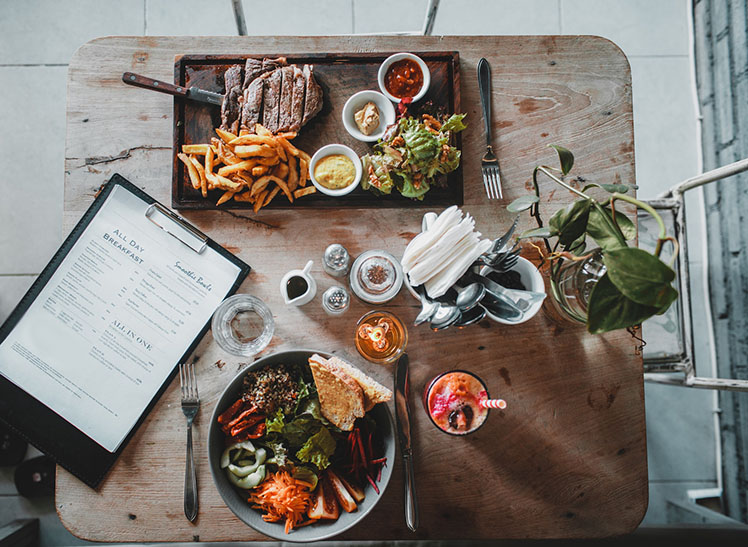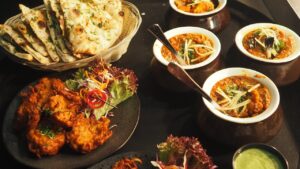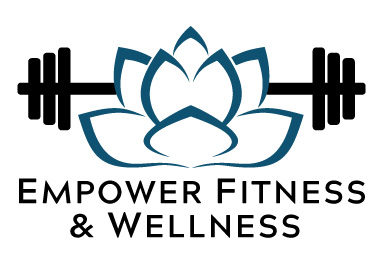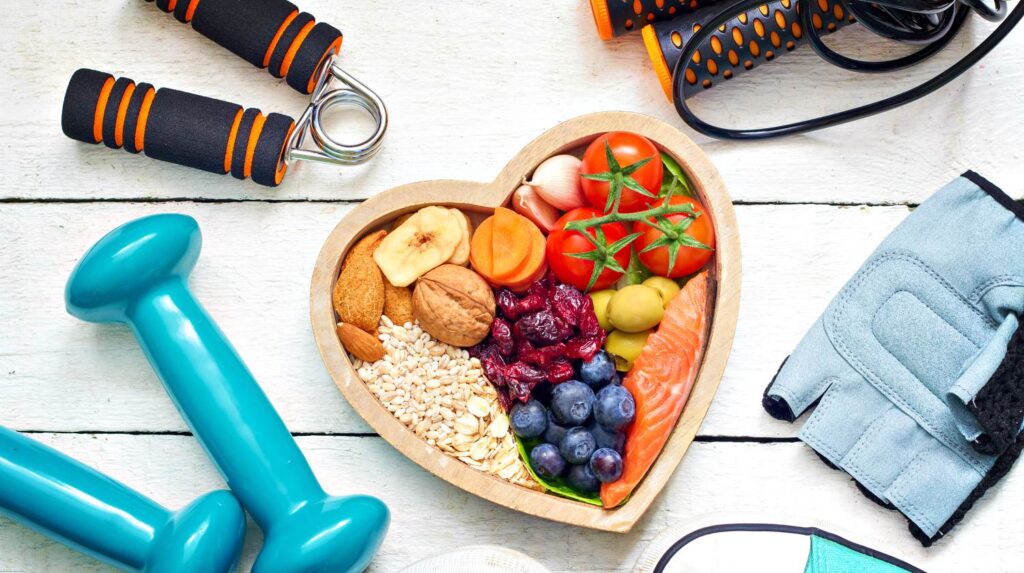
Of all the misconceptions in the dieting world, one of the most painful is that eating healthy and eating out are mutually exclusive.
My experience with teaching hundreds of clients the principles of successful macro tracking for their body goals has proven time and time again that it is completely possible to hit macro targets (or come close!) even when you are not in control of the food.
If you count macros, you will be confronted with the challenge of figuring out how to hit macros when eating out and you are not in control of the preparation process.
1. Take an honest assessment of your goals.
Your goals will dictate how strict you need to be when it comes to hitting macros at restaurants, at social gatherings, or other food situations you find yourself in where you are not in charge of preparation.
For example, if you have a timeline attached to your goals for a leaner body composition, every meal matters and you probably need to be accurate with tracking your macros. In some situations — like if you’re going on a beach vacation in two weeks or participating in a fitness competition — you may choose to avoid eating out altogether. More often than not, restaurant meals are a calorie and macro bomb, and for some, it’s simply not worth the saving or manipulating you’ll have to do to make it work within targets.
For most, however, being more flexible with macro tracking for a few days will not completely deter them on the path to their goals. Take an honest assessment of your goals and the decide if going slower or quicker towards them feels best.
2. Carve out space for meals before eating out.
Restaurant meals will likely pack more carbohydrates and fats than if you tried to recreate the same dish at home. Professionals tend to cook with more fats and oils — they make use of brining, basting and marinating all along the preparation process. Ever wonder how a chicken breast prepared by you at home tastes completely different than when you order it at a restaurant?! That’s because chefs tend to lean on seasonings, marinades, oil and butter, my friend.
There are a couple things that you can do to make restaurant meals better fit your macro targets. You can:
3. Use available nutrition information to track macros.

So, let’s say you’re not eating at a fast food place or chain restaurant. You’re wondering how you might track macros for a meal where the nutrition information is not available.
Here’s what you should not do: search broad terms for mixed dishes in your food diary. If you type “breakfast bowl” into your food diary, you’re going to see over 100 different versions of that bowl ranging from a couple calories up to 1000+, none of which have the same ingredients as the meal in front of you. Instead, you’ll log each ingredient as you see it in front of you:
- 2 eggs scrambled
- 1 ounce cheddar cheese
- 1/4 cup black beans
- 1/2 cup cilantro lime rice
- 1/4 cup pico de gallo
- 2 ounces turkey sausage
Estimating the portion sizes of the ingredients won’t be perfect. Maybe you’re logging 1 ounce of cheese but it’s actually 1 1/2 ounces – but that’s ok. Meals prepared outside of the home might only account for a small subset of your week and as long as you’re tracking macros to the best of your abilities, it should not negatively impact your goals.
4. Choose options you can guesstimate the macros for.
Depending on how strict you are to your macro targets, it might more essential that you pick meals you can easily identify the ingredients to log appropriately. Below are some examples of tougher-to-track (especially if you’re not the one preparing the dish) and easier-to-track meals.

Tougher-to-Track vs. Easier-to-Track
EXAMPLES OF “TOUGHER-TO-TRACK” MEALS
EXAMPLES OF “EASIER-TO-TRACK” MEALS
5. Make alterations to your meal where possible.
There are probably some small tweaks you can make to meals that you don’t prepare yourself to be a bit more macro-friendly to your personal targets. Here are a few things you can do to keep calories and fat macros down in a restaurant meal.
6. Lean on common sense.
Our food environment has changed drastically in the last several decades. We’re surrounded by cheap, highly palatable foods everywhere! Portions are bigger, plates are bigger, utensils are bigger. Because of technological advances in farming, production and transportation, we can consume nearly any type of cuisine we want — from all over the world.
These trends make restaurant eating an enjoyable and worthwhile experience, but it can be difficult to navigate accurate macro tracking while dining out. However, you can’t go wrong with a few simple behaviors that promote mindful eating in restaurants.
7. Review this list.
Review this list of things you have control over, even if tracking macros is not possible.
The awesome thing here? You don’t have to track perfectly for macros to work for you. You can absolutely see success in a macro tracking approach by estimating your eats when you dine out, especially if most of the meals you eat away from home are made with real, whole food and are macro balanced on your plate. Don’t let perfect stop you up from tracking altogether.

 Why Meal Plans Don’t Always Work and What to Do Instead
Why Meal Plans Don’t Always Work and What to Do Instead
